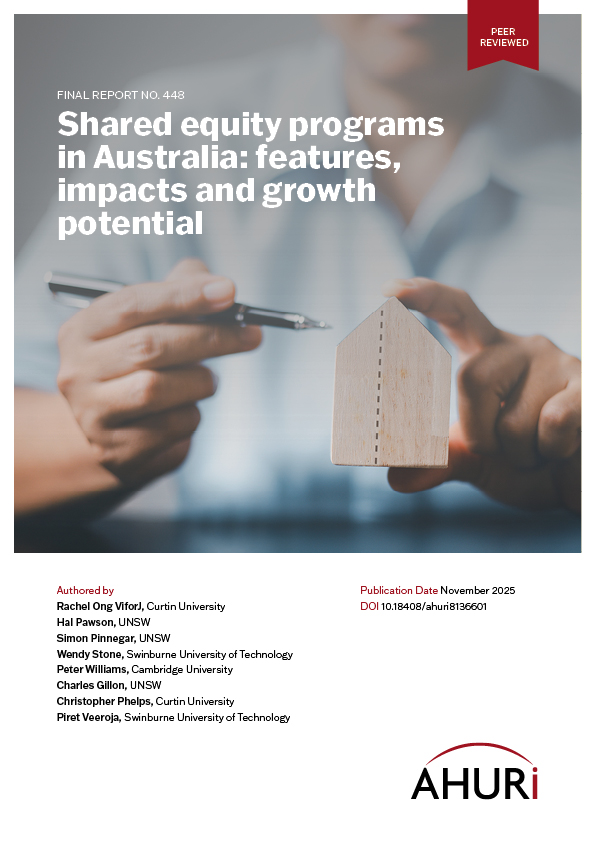
Future-proofing shared equity schemes in a world of high demand
13 Nov 2025
New AHURI research seeks to realise the benefits of shared equity programs for participants and governments.
By examining 19 shared equity schemes in Australia, Canada, Ireland and the UK from the 1990s to today, the study found different models had significantly different impacts on addressing unequal purchasing opportunity, stimulating home building, and house price inflation.
Curtin University professor and study lead Rachel Ong ViforJ said the study revealed potential demand for government-led shared equity schemes was large.
Analysis of more than 2100 Australian renter households aspiring to home ownership showed 85 per cent would not be able to achieve it without support.
However, feedback from potential and previous scheme users revealed many were confused about how they worked, and the appeal of the schemes were mixed.
“For most households wanting to become homeowners, shared equity is rarely going to be the ideal or perfect solution,” Prof Ong ViforJ said. “But for many it is an acceptable solution, and for the majority taking up government-backed products, it is the only one.”
Minimal risk of pushing up house prices
The study found the risk of shared equity schemes pushing up house prices was small, largely due to the limited scale of current schemes.
Prof Ong ViforJ said this was likely the case for Help to Buy, which would be limited to 10,000 places per year.
However, recent changes to raise income limits from $90,000 to $100,000 for singles, and from $120,000 to $160,000 for couples, had increased inflationary risk.
“Increasing the number of aspiring homebuyers who are eligible for the scheme intensifies competition for available places in the program,” Prof Ong ViforJ said.
Help to Buy was unlikely to be short of applicants, with an estimated 299,000 households eligible, of which about 108,000 could afford to buy with the scheme’s help.
Potential to boost housing supply
Prof Ong ViforJ said the decision to increase the maximum contribution rate in Help to Buy for new builds to 40 per cent (compared to 30 per cent for existing properties) showed the Government wanted the scheme to encourage building, and shared equity schemes have proven effective at adding to supply.
One British scheme was estimated to have contributed to a 14.5 per cent bump in home building.
The effect of stricter eligibility criteria
The research found schemes with stricter income limits on applicants, property price caps, and focus on priority groups were available to fewer buyers, but better targeted customers who would otherwise be unable to buy a home.
The trade-off had a significant impact on schemes’ ability to target support, with only about two per cent of users of stricter schemes able to buy without support – a figure that jumps as high as 36 per cent in schemes with looser criteria.
Modelling of the Federal Government’s Help to Buy scheme suggested 8 per cent of potential users could buy a home without the scheme – a percentage that was likely to have gone up following decisions to increase income limits and property price caps.
Data gaps persist
Despite the study’s insights, Prof Ong ViforJ said significant data gaps remained, including on how users felt living in shared equity homes, the benefits users experienced longer-term, and the risks, returns and financial sustainability of schemes.
“Although bigger government-backed schemes are financially sustainable, governments still need to borrow capital—which limits their operating scale,” she said.
Prof Ong ViforJ said lessons could be drawn from private providers on how to unlock investor interest in government shared equity schemes – for example through innovative ‘patient equity’ investment or bond arrangements.
The study also identified a need for regular, independent evaluations of shared equity programs to ensure they were working for customers and achieving objectives.
The research was undertaken for AHURI by researchers from Curtin University, UNSW, Swinburne University, and Cambridge University.

